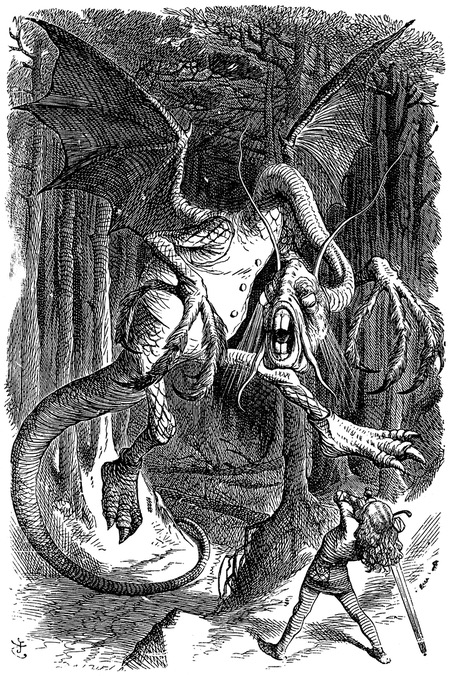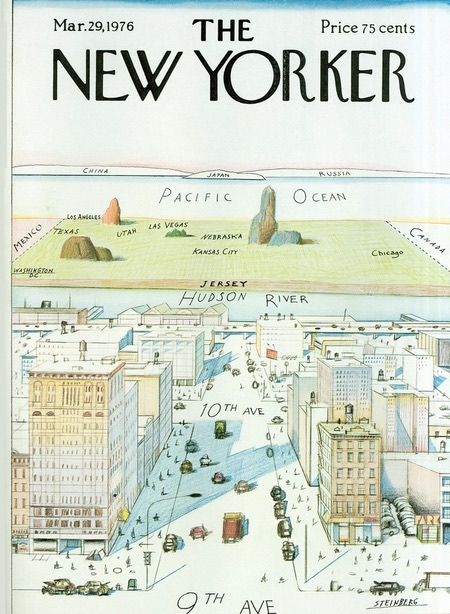

The Jabberwock, John Tenniel, pen and ink. I don’t know the size or location of the original drawing. Link is to the image page on Wikipedia, which in turn links to a very high resolution image (11.62 mb).
John Tenniel’s beautifully iconic illustrations for Lewis Carroll’s books have never been equaled for their visual charm and definitive interpretations, though Arthur Rackham has perhaps come closest.
I think Tenniel pulled out the stops (or the ink bottle stopper) for his illustration of the Jabberwock, a pseudo-mythical beast that is the titlular creature of Carrol’s nonsense poem Jabberwocky. The poem was part of Through the Looking Glass and What Alice Found There, the sequel to Alice’s Adventures in Wonderland.
The poem itself, filled with nonsensical terms that are the kind of verbal ticklers that sound like they almost make sense, has been influential and the topic of much conversation and speculation.
I’ve quoted it here for your nonsensical enjoyment and comparison with Tenniel’s illustration:
Twas brillig, and the slithy toves
Did gyre and gimble in the wabe;
All mimsy were the borogoves,
And the mome raths outgrabe.
“Beware the Jabberwock, my son!
The jaws that bite, the claws that catch!
Beware the Jubjub bird, and shun
The frumious Bandersnatch!”
He took his vorpal sword in hand:
Long time the manxome foe he sought—
So rested he by the Tumtum tree,
And stood awhile in thought.
And as in uffish thought he stood,
The Jabberwock, with eyes of flame,
Came whiffling through the tulgey wood,
And burbled as it came!
One, two! One, two! And through and through
The vorpal blade went snicker-snack!
He left it dead, and with its head
He went galumphing back.
“And hast thou slain the Jabberwock?
Come to my arms, my beamish boy!
O frabjous day! Callooh! Callay!”
He chortled in his joy.
‘Twas brillig, and the slithy toves
Did gyre and gimble in the wabe;
All mimsy were the borogoves,
And the mome raths outgrabe.
-Lewis Caroll











